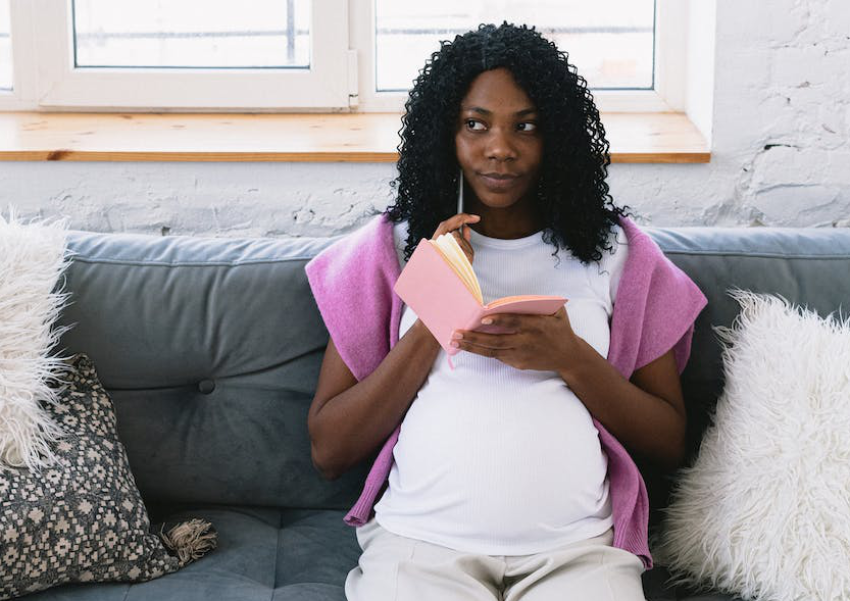
Nkosazana Mda (26) from Paarl, Western Cape, is pregnant with her first child. Currently in the first trimester, the journey hasn’t been easy. In addition to the changes in her body and mind, her friends and family are always asking about the type of birth she would like. ‘This pregnancy is surely the most overwhelming phase of my life! I have been trying to come to terms with the changes in my body and make sense of my mood swings. I also need to consider how I’ll deliver the baby; it’s a lot to deal with,’ she says.
PREPARATION IS KEY
Although it may seem like a lot to deal with, it is essential that you understand all types of birth options available to you. This is according to Dr Zolani Maswazi from Frontier Hospital obstetrics and gynaecology department. He says this will prepare you for labour and possibly ensure a smooth delivery. ‘It’s almost impossible to plan for all the phases of labour and delivery, but you will handle them better if prepared.’ A range of birthing options is available, and they depend on various factors. These include your pregnancy, health and that of your unborn baby as well as location and facilities available. ‘It is important to note that there is no wrong or right way to give birth. Despite what you might have heard, always consider a birth option that is best for you and your baby based on facts,’ Dr Zolani says.
VAGINAL DELIVERY INA MATERNITY FACILITY
Advanced midwife Nompucuko Sishuba says vaginal delivery is an option that most women know of, and expect. It is performed in a maternity facility and rolls out in three stages. ‘The first stage is labour, which is when your cervix is opening and the baby moving down the birth canal. Then comes the pushing and delivery, followed by the last stage where the placenta is delivered,’ she says.
Dr Zolani recommends giving birth at a maternity hospital for high-risk pregnancies or if it is your first child.This is for safety purposes as there are systems in place to tackle any emergency. If you prefer natural childbirth without any medical intervention, giving birth at a facility can be a disadvantage as it can occur. ‘This is nearly impossible at a facility because there are standard procedures that everyone in labour should adhere to. These include foetal monitoring, vaginal examinations and, in some cases, medical pain relief options such as regional anaesthesia,’ he says.
CAESAREAN BIRTH
After vaginal deliveries of her two children with no medical intervention, Thembisa Mqikela (32) was shocked to learn that her third child required caesarean birth (C-section) during labour. This refers to surgery to deliver a baby where they are removed from your uterus through an incision into the abdomen and uterus. Thembisa had suffered placental abruption – when the placenta partially or completely separates from the inner wall of the uterus before delivery – leading to the emergency. ‘I had never considered a C-section before because of the stories I grew up hearing about it. These included that you can’t breastfeed babies born through the procedure or that once you have it, you will always deliver that way. After the procedure,I realise how silly and untrue some of them were,’ she says.
According to Nompucuko, C-sections can be performed under two conditions – electively or as an emergency. An elective C-section is planned due to personal or medical reasons such as chronic health conditions or sexually transmitted infections. On the other hand, an emergency C-section occurs when your safety or that of the baby is at risk. These procedures also carry some potential health risks. You can develop an infection of the lining of the uterus or have potential complications in your future pregnancies. To your baby, it can likely cause transient tachypnea – a short-lived breathing disorder after birth. ‘With medical developments over the years, caesarean births have become a lot safer, and more women are choosing them. However, some people still regard them as unnatural. That is why in some communities, women who choose them are judged,’ she says. ‘Even though C-section is a major abdominal surgery with risks, mothers can enjoy some benefits from it. For example, if you opt for an elective C-section, you will know your baby’s date of birth in advance. Also, vaginal birth after a caesarean is possible,’ Dr Zolani says.
HOME BIRTH
Some women choose to give birth in the comfort of their own homes. For my mother Nontathu Mahomba (64), giving birth to three of her four children at home was not a choice. ‘Back in the 70s, medical facilities were not as accessible to the general public as they are today. It was worse for us because we lived in remote rural areas of the Eastern Cape. Experienced elderly women assisted young women with childbirth at home,’ she shares. Nompucuko says most modern women who opt for home births usually want to be in control of the process or want their family to be part of it. ‘Should you decide on this route, a qualified and experienced midwife should be present to assist you.
Also, ensure that an obstetrician is on standby in case of emergency,’ she cautions. Fortunately for my mother, her home births had no complications. ‘My mother-in-law, together with other trusted midwives that I was familiar with, delivered my babies. It was comforting to give birth in the hands of people I knew and trusted. Besides, they were experienced and had delivered most babies in our village. I remember that with my second child, the placenta did not come out immediately. The women quickly made tea and instructed me to drink it while it was hot. Then they gave me an empty bottle to blow into. As I did this, the placenta started coming out.’ The prospect of a hazard arising in the absence of medical expertise and emergency equipment is the main disadvantage of a home birth. Without the supervision of a professional midwife, they can be dangerous, hence they are not encouraged.
WATER BIRTH
This is vaginal birth performed in a tub of warm water. Some women choose it due to the pain-relieving and comforting nature of water. ‘You may choose to labour in the water and get out for delivery or give birth inside. However, just like home births, this requires strict guidance of a professional midwife,’ Nompucuko says. Giving birth may be one of the most physically painful experiences ever known to women. But, it is the beginning of a new life. Whichever way you choose, approach it with an informed attitude and consult a gynaecologist.
Also see: Give your newborn baby the best




